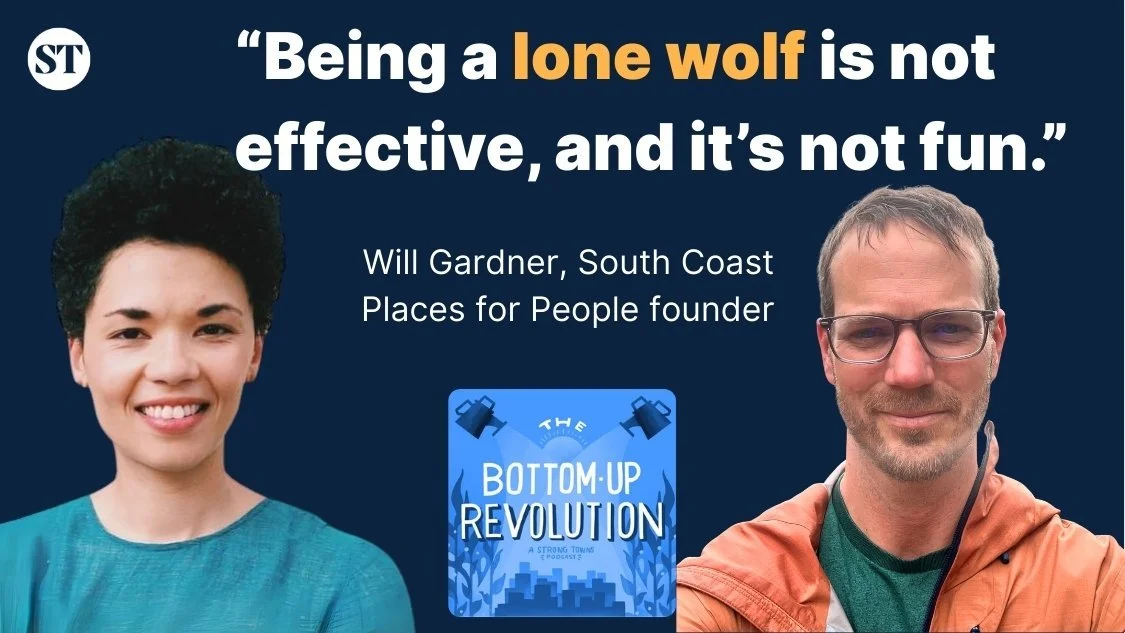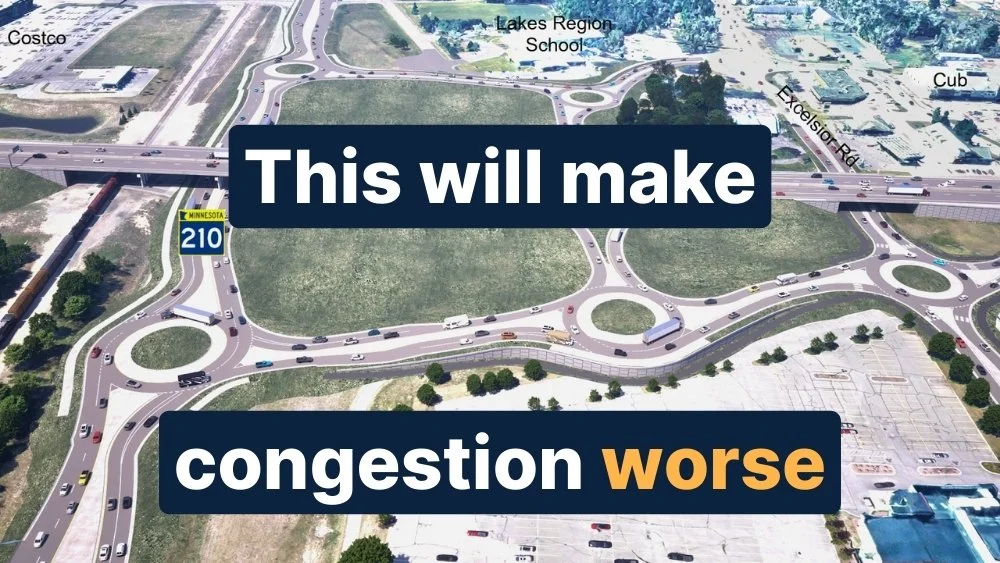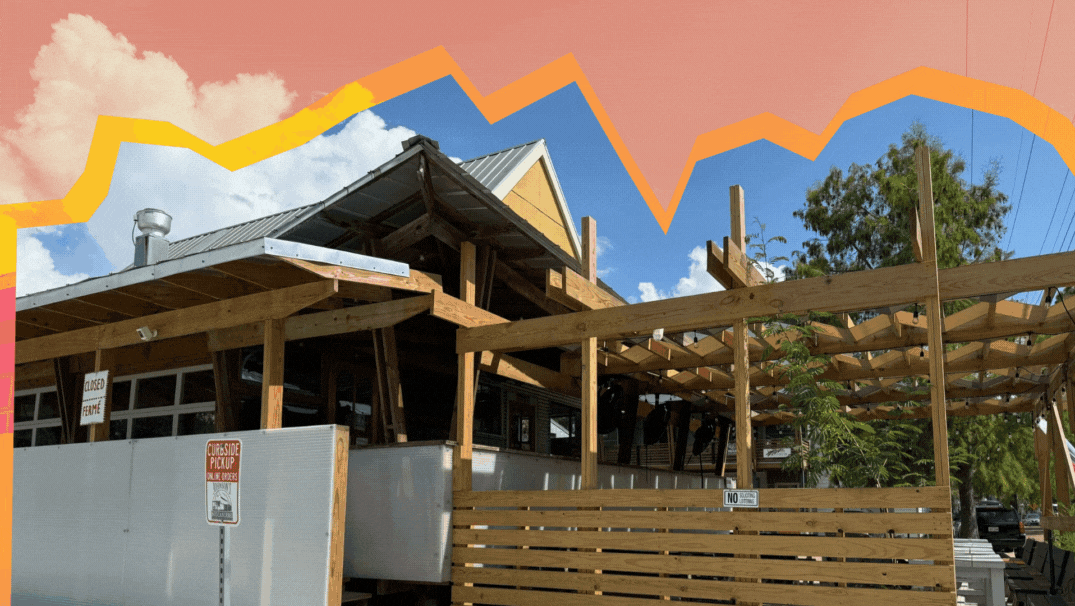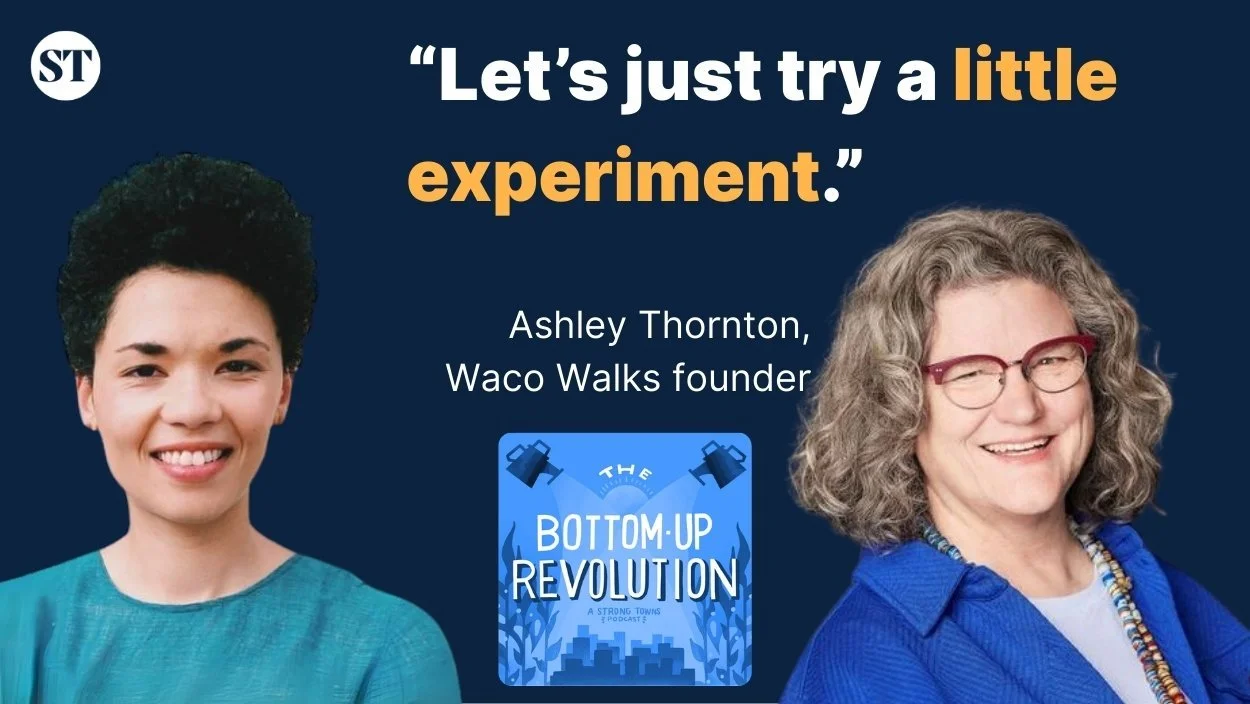Signing off
“The Strong Towns voice needs to be heard by elected and appointed officials across the US. ”
“Strong Towns is doing some of the most important work in this country.”
“Strong Towns is a simple concept with a never-ending depth behind it.”
Thank you to everyone who became a member this week. We can't do this without you.
See you back here on Monday when we resume our regular schedule.
What the Finance Decoder revealed about Fayetteville, Springdale, and Siloam Springs—through the eyes of a local Strong Towns member.
Will Gardner is the founder of South Coast Places For People, a new nonprofit in Massachusetts. He discusses the three working groups his nonprofit recently started, which focus on parking reform, backyard cottages, and street safety.
The city of Artesia, California, has been struggling with a speeding problem. Instead of just blaming drivers, city staff teamed up with local advocates to address the root problem: the street design.
Abby and guest John Pattison dive into the benefits and drawbacks of "sponge cities," cities that incorporate natural features like wetlands into their stormwater management infrastructure.
Jess and Dan Sollaccio are city commissioners and a small-scale developers from Warrenton, Oregon. They explain their asset-based mindset for strengthening their community, as well as their efforts to turn a vacant building into a community hub.
In Baxter, “fighting congestion” is the sales pitch, but corporate subsidy is the goal.
A 66% decrease in crashes wasn’t enough to protect these traffic diverters, but the unified efforts of local advocacy groups and city officials might be.
Memphis was ranked the #1 most dangerous metro in 2024. That’s not stopping Kelsey Huse, an advocate and grad student. She shares the inside scoop on Memphis’ dangerous design and how she’s working to change it.
When our infrastructure makes normal childhood behavior life-threatening, allowing kids to do typical childhood activities becomes reckless endangerment.
Slow permitting, shifting utility requirements, and inconsistent rules threaten the small-scale development that cities rely on. Here’s one developer’s story.
Data centers use a massive amount of electricity, sometimes even rivaling major cities. Today, Edward and Abby discuss the far-reaching implications of this kind of land use. (Transcript included.)
Design doesn’t just reflect our values — it forms them. If we want citizens who are engaged, generous, and resilient, we need places that cultivate those virtues.
How a passionate group of locals cracked Nanaimo’s stubborn parking rules—and unlocked new possibilities for housing and community.
Eva López Chávez is a city council member in Salt Lake City, Utah. She and Norm discuss how she’s building prosperity in her city.
When a child is killed on a street like West Hudson Boulevard, it’s not a tragic fluke. It’s the outcome we designed for.
Four days. Three crashes. Two lives lost. One life changed forever. For residents of Fairhaven and New Bedford, this wasn’t just a bad weekend; it was a turning point.
Chicago and Denver just joined a growing list of cities including Anchorage, Minneapolis, and Austin in rethinking how city space is used, and what we pay for.
Ashley Thornton is the founder of Waco Walks, an organization devoted to promoting walkability in Waco, Texas. She and Tiffany discuss the design choices that make Waco difficult to walk in and how Waco Walks is working to change that.
After a car crash damaged three houses, these Minneapolis residents are done waiting for officials to act. They're demonstrating a better way of responding to crashes.
Colorado's population is rapidly aging, but limited housing stock means seniors are stuck in homes they can’t afford. Abby discusses this dilemma with Katy Claggett, a developer originally from Colorado who develops infill housing for seniors.
Los Angeles is desperate to rebuild after the wildfires that destroyed nearly 60,000 acres back in January. So why is it that 6 months later, not much has changed?
Mark Hoppen is a former city manager who’s been strengthening communities for decades. He talks about why someone should pursue city management, what real priorities look like in that role, and how to lead with care and practicality.























When cities attempt to prescribe the exact way a building must be used, they risk regulating away the very life of a place.